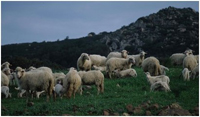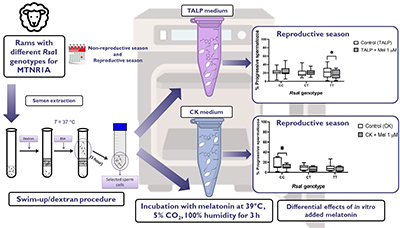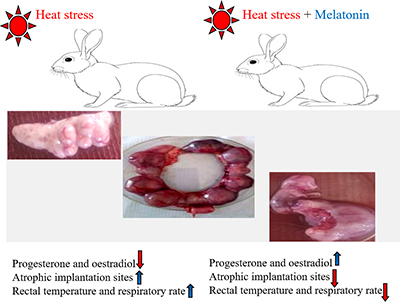Non-photoperiodic Actions of Melatonin
Melatonin is a hormone that has effects on various organs and is produced mainly by the epiphysis. The administration of melatonin influences the vitality and weight of the lamb at birth, and the production and quality of the mother’s milk. The use of this hormone during pregnancy can mitigate the effect of birth stress on the lamb and the mother. Photograph by Vincenzo Carcangiu.
This article belongs to the collection: Non-photoperiodic Actions of Melatonin.
Melatonin regulates seasonal reproduction in ovine species. This study explores the influence of the melatonin receptor gene and its variants on the response of ram spermatozoa to melatonin in different seasons and media. Results revealed that having specific variants of the gene affects how sperm cells react to melatonin. Understanding these genetic variations could aid in enhancing reproductive techniques in ovine species. Image by Victoria Peña-Delgado.
This article belongs to the Collection Non-photoperiodic Actions of Melatonin.
Melatonin administration (1 mg/kg body weight) during the first half of pregnancy of heat-stressed rabbits improved heat-tolerance capacity, sex hormone production, and fetal viability. These positive effects were subsequently associated with improved conception rate and kindling rate. Image by authors.
This article belongs to the Collection Non-photoperiodic Actions of Melatonin.
Melatonin has important effects on reproduction, but the melatonin system has not been studied in the sheep uterus. This research demonstrated the expression of melatonin synthetising and catabolising enzymes, and melatonin receptors in the sheep uterus, and showed that they are influenced by the day of the oestrous cycle and undernutrition. The results help explain the adverse effects of undernutrition on reproduction in sheep, and the success of exogenous melatonin treatments in improving reproductive outcomes.






